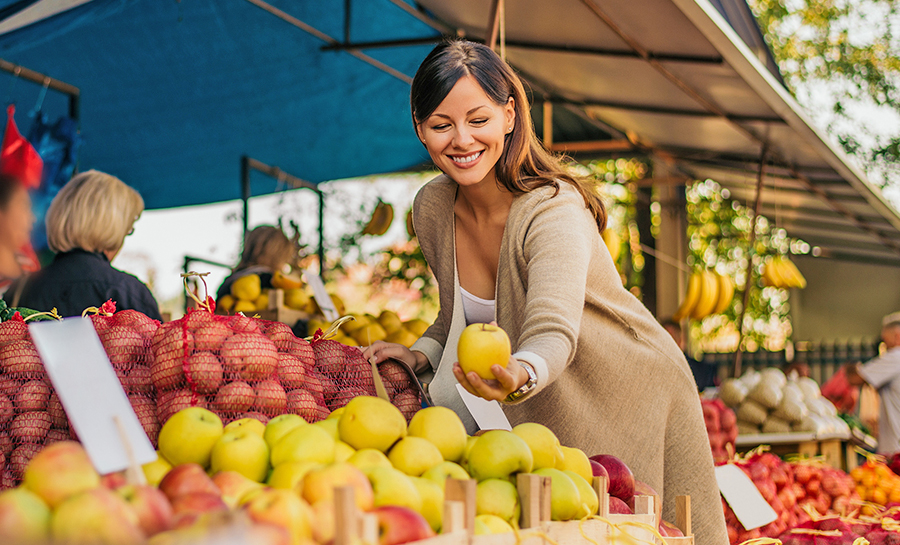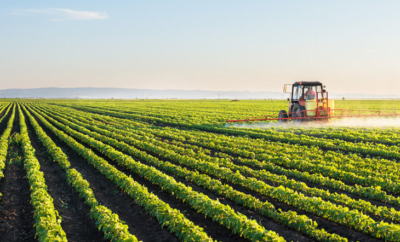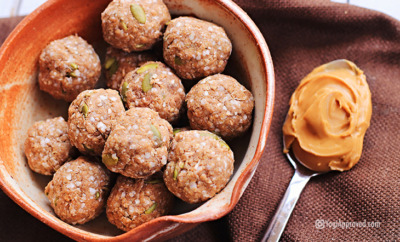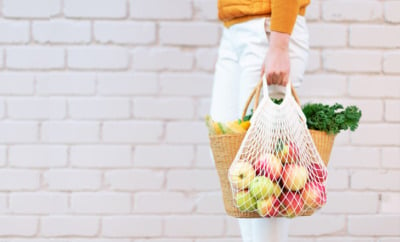The Dirty Dozen and Clean 15 – Which Produce to Buy Organic and Why

It’s no secret more and more people are prioritizing organic produce – and it’s no wonder with the major whole-body health benefits choosing organic fruits and vegetables has to offer! Grab your shopping list and get ready for a review of the 2023 Dirty Dozen and Clean 15 lists.
Not only is organic produce always non-genetically modified (non-GMO), but it’s also typically grown in more nutrient-rich soil and (most importantly) grown without using synthetic pesticides, synthetic fertilizers or other “concerning chemicals” many are working hard to avoid.
The only catch? Having to spend what often feels like DOUBLE the dollars to get it!
In this article, you’ll learn about the “Dirty Dozen” and “Clean 15” Shopper’s Guides to help save you money on organic produce, as well as learn big truths regarding synthetic pesticides and helpful tips on how to reduce exposure to them.
Curious about the difference between organic vs natural foods and what GMO means? Organic vs Natural vs GMO Foods and What You Need to Know About Each
What Are the Dirty Dozen and Clean 15 Guides?
The Dirty Dozen and Clean 15 are annual lists composed by the EWG (the Environmental Working Group) sharing which fruits and vegetables have the highest and lowest amounts of pesticide residue, respectively.
With the help of the U.S. Department of Agriculture (USDA) and Food and Drug Administration (FDA), nearly 45,000 samples are taken each year on a variety of 46 fruits and vegetables. Using these findings, the produce is then ranked based on their level of pesticide contamination, from which the “Dirty Dozen” and “Clean 15” Shopper’s Guides are created!
To utilize these lists, it’s recommended to shop organic for the produce found on the “Dirty Dozen” list and more peacefully shop conventional for the produce found on the “Clean 15 list”!
How Can Pesticides Affect Our Health?
It’s commonly said only “very small amounts” of pesticides remain on produce once harvested, transported, exposed to light, washed, etc…however, there’s growing concern regarding “how much is too much?” when it comes to excessive synthetic pesticide use and our health.
Due to widespread use, we’re commonly exposed to synthetic pesticides not only through contaminated food, but also through water and air?
While our bodies are built to successfully break down and excrete toxins such as synthetic pesticides, when we’re heavily exposed to them through food, water, air, etc., it can affect our ability to effectively detoxify them. This not only contributes to our “toxic load” (the amount of harmful chemicals accumulated in the body), but can also become the root cause of many serious health concerns.
In fact, evidence relates pesticide exposure to increased rates of chronic disease, genetic damage, endocrine disruption, mitochondrial dysfunction, oxidative stress and more!
Read: Glyphosate In Your Food: What You Need to Know About This Chemical and Your Health
Are Pesticides Used in Organic Agriculture?
Although it comes as a surprise to most, organic agriculture actually does incorporate the use of pesticides to prevent crop loss. However, the chemically-derived synthetic pesticides used in conventional agriculture are not allowed.
Instead, organic agriculture uses naturally-derived products called biopesticides composed of natural matter created from plants, animals, minerals and beneficial bacterial products.
In general, the biggest difference between these two crop-protectors is that conventional agriculture uses something called “broad-spectrum products” to create their synthetic pesticides. Broad-spectrum pesticides are not only harmful to the specific pests they’re created to kill, but also to humans, other species and the environment.
On the other hand, the biopesticides used in organic agriculture are highly targeted to their specific pests, making them significantly less harmful to both humans and other species as well as making them much more environmentally friendly.
2023’s Dirty Dozen List
Phew! Learning about pesticides can feel like heavy stuff…we totally get it. However, feel free to take a deep breath of relief knowing there are absolutely things you can do to help!
This year, when you’re perusing the produce section, start by simply doing your best to buy organic for the fruits and vegetables listed on the 2023 Dirty Dozen List.
The Dirty Dozen include:
- Strawberries
- Spinach
- Kale, collard and mustard greens
- Peaches
- Pears
- Nectarines
- Apples
- Grapes
- Bell and hot peppers
- Cherries
- Blueberries
- Green beans
2023’s Clean Fifteen List
While buying “all organic” isn’t always the most budget-friendly way to fill your fridge, this is where shopping conventional for the foods found on the “Clean 15” can help!
The Clean 15 include:
- Avocados
- Sweet corn
- Pineapple
- Onions
- Papaya
- Sweet peas (frozen)
- Asparagus
- Honeydew melon
- Kiwi
- Cabbage
- Mushrooms
- Mangos
- Sweet potatoes
- Watermelon
- Carrots
Your Guide to Seasonal Produce + 5 Benefits of Buying Vegetables and Fruits In Season
Use These 5 Additional Tips to Reduce Pesticide Exposure
If diving deeper into reducing exposure to synthetic pesticides feels right for you, remember there’s always additional steps you can gradually take which add up to making a big difference!
Here are simple tips to enjoy a #lesstoxiclifestyle when it comes to pesticides:
1. Shop Organic for Animal Products When and if Possible
Did you know organically farmed animals cannot be fed grains and grasses grown using synthetic pesticides and fertilizers? To further reduce exposure to these chemical products, shopping organic for meats, dairy products and eggs can be a great help!
2. Thoroughly Soak, Wash and Rinse All Produce Before Eating
Properly soaking fruits and veggies isn’t only important in ridding produce of harmful bacteria, but also for washing away pesticide residue.
The next time you grab groceries, try soaking your produce in a natural solution (such as 3 parts water + 1 part vinegar) before thoroughly scrubbing, rinsing and popping into your fridge or fruit bowl!
3. Shop Seasonally and Locally When You Can
Due to the need for far less chemical treatment in order to make the trip to our table, shopping locally grown seasonal produce is one of the simplest ways to minimize our exposure to pesticides. As a bonus, buying locally produced food also helps support the hard-working farmers close to home!
4. Prioritize Using Filtered Water for Drinking and Cooking
Due to the commonly excessive use of synthetic pesticides, “run off” from fields treated with them have been shown to pollute 90% of the 442 U.S. streams sampled by federal scientists. Ensuring to both drink and cook with filtered water is the best way to avoid consuming these potential contaminants in our water supply!
5. Use Non-toxic Pest & Weed Killers in Your Home and Garden
Switching from chemical-ridden killers to non-toxic products is one of the best ways to prevent directly contaminating your home or lawn with synthetic pesticides. For a safer option, try using alternatives such as diatomaceous earth for pest-control and a vinegar solution (1 gallon vinegar + 1 cup of seat + 1 oz of liquid soap) for weed control.
Use the Dirty Dozen and Clean 15 Shopper’s Guides for a Healthier You
While we can’t always control what happens with our food before it makes its way onto our plate, becoming more knowledgeable about how our food is produced is one of the first steps to making more informed dietary choices!
With the help of tools such as the Dirty Dozen and Clean 15 guides, you can feel better knowing you’re taking action to better care for your holistic health without breaking the bank to get there!


This Month's Letter
From the Editor
Monthly motivation and food for
thought from our founder.





























